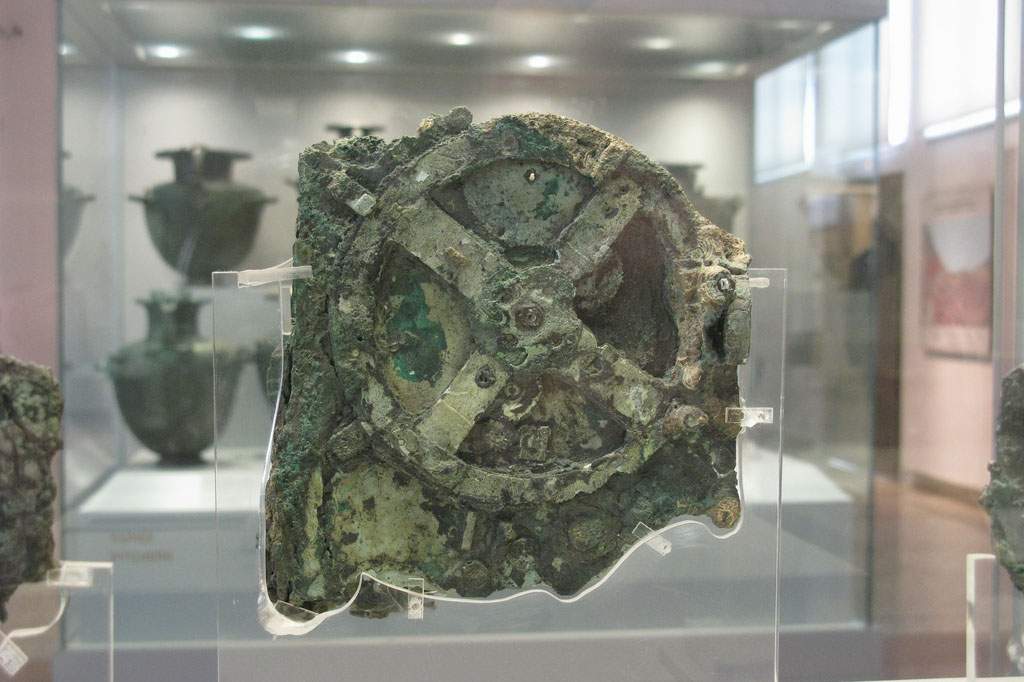
In 1900, divers discovered the wreckage of a large ship off the Mediterranean island of Antikythera, near Greece. Archeologists believe it sank during the first century BC.
The divers recovered an impressive array of Greek statuary and pottery, but they also found something much more surprising. It was a heavily corroded, mangled, and sediment-encrusted machine with a complex array of finely milled bronze gears.
Its manufacture showed a level of sophistication not previously seen before the clockwork of the fourteenth century AD. It became known as the Antikythera mechanism and remained a mystery for decades, because researchers had no really good way to study it further.
Secrets Revealed
By the early twenty-first century, an international team of researchers was able to use high resolution x‑ray tomography to see inside the mass of gears and sediment, and, at last, explore its secrets.
The interior of the machine contained more than thirty gears and wheels, organized so that the machine functioned as an astronomical computer. Using a mathematical theory developed by the philosopher Hipparchos in the second century BC, it could compute the locations of the sun, moon, and planets in the sky, and the moon's phases. It was designed to show lunar and solar eclipses based on the mathematical techniques of the Babylonians.
It was covered with inscriptions that described what the user would see on the dials of the mechanism. The researchers even made a modern re‑creation of the device.
But a machine of this sophistication must have been the product of a prolonged tradition of machine building, and researchers still haven't found other examples, although they are mentioned in ancient literature.
Â
Thank you to Michael. G. Edmunds of Cardiff University for his help in reviewing this episode.
Sources And Further Reading:
- Antikythera Mechanism Research Project. Accessed April 20, 2017.
- Hale, Tom. "A Decade Of Work Has Decoded This Ancient Greek Astronomy 'Computer'" IFLScience. April 10, 2017. Accessed April 20, 2017.
- LaFrance, Adrienne. "The Most Mysterious Object in the History of Technology." The Atlantic. June 20, 2016. Accessed April 20, 2017.
- Paphitis, Nicholas. "Decade of labor reveals philosopher's guide to the galaxy (Update)." Phys.org - News and Articles on Science and Technology. June 9, 2016. Accessed April 20, 2017.









